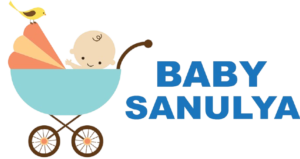By: Gabriela Rojas, Executive Director of Miami Diaper Bank
The Miami Diaper Bank is committed to helping the families we serve keep their babies clean, dry and healthy. We’re also committed to the families we aren’t serving yet. In 2022 we did a deep dive to find areas that we call diaper deserts and develop a strategy to reach people living in these neighborhoods. Our solution to offer help where it’s most needed is a new mobile diaper pantry, a custom pink van that began reaching out to our highest need South Florida areas in July. We think of it as an ice cream truck, but for diapers.
What is a diaper desert?
Several factors can go into making a place a diaper desert. Some communities do not have big box stores or supermarkets, two of the places that diapers can be most affordable. We found that in these neighborhoods, people were paying $15 to $18 at their corner mercado for a small package of diapers that could be purchased for $12 at Walmart. We also worked to include communities that had poor transportation that further restricted where people could shop and what services they could access. Finally, we looked at areas where we had few or no partner agencies. These seemed like good places to serve directly.
Working to end diaper need with a mobile pantry
Thanks to a Funds for Change grant from the National Diaper Bank Network and a local funder, The Children’s Trust, we were able to purchase a van. While our future mobile pantry was being manufactured, we had time to consult with other NDBN member organizations that were already doing mobile and/or direct distribution, like Texas Diaper Bank, Mother to Mother and Helping Mamas. We also had time to develop intake forms that would give us a lot of good information about the families we would be serving. We adapted some questions from NDBN’s Economic Impact Study, in which we were proud to participate in. Because of the nature of the communities the mobile pantry is designed for, we expected to find families who were not connected with all the services that could help them thrive. A robust intake process is a good way to identify those gaps which help us pool community resources and deliver them where the families are. Staff on the mobile pantry will be prepared to connect families with other services that can help them.
The name Miami makes you think of beautiful people on beautiful beaches, luxury homes, a never-ending party. Some, but by no means most, of my city’s residents enjoy that glittering life. The people cleaning those big houses, cooking in the hotels, driving the Uber from party to party are working and living in an extremely expensive city. Many of the families served by Miami Diaper Bank are working full-time and even working multiple jobs. But it’s just not enough.
Diaper need to degree and beyond
I experienced diaper need myself, when I became pregnant during my first year of college. I recently graduated from Florida International University. Making it through college as a single mother, most of that time also working for a growing nonprofit, was not easy. I was so fortunate to have supportive parents and professors who believed in me. Not everyone struggling with diaper need has that kind of network available to them locally. The more than 100,000 families Miami Diaper Bank has served all want the best for their children, but they just don’t have the resources to meet basic needs. That’s where we come in; and that’s why ending diaper need is my passion.
We’re particularly glad to be serving some outlying areas with the mobile pantry, namely Homestead, Florida City and North Miami, where we’re collaborating with affordable housing management companies and the City Commissioners to arrange distributions that meet families, literally, where they live. We plan to serve 2,400 additional families with the advent of the mobile pantry. If you are in the neighborhood, you’ll see our bright van coming – and you’ll get an eyeful of messaging about diaper need, which we know is a problem in every community. We’re determined to leave no community unserved.

